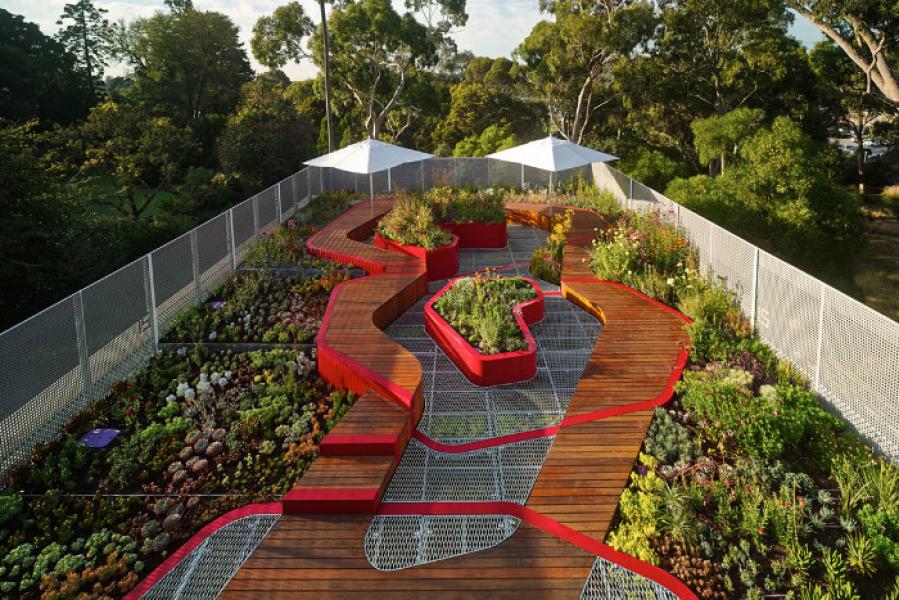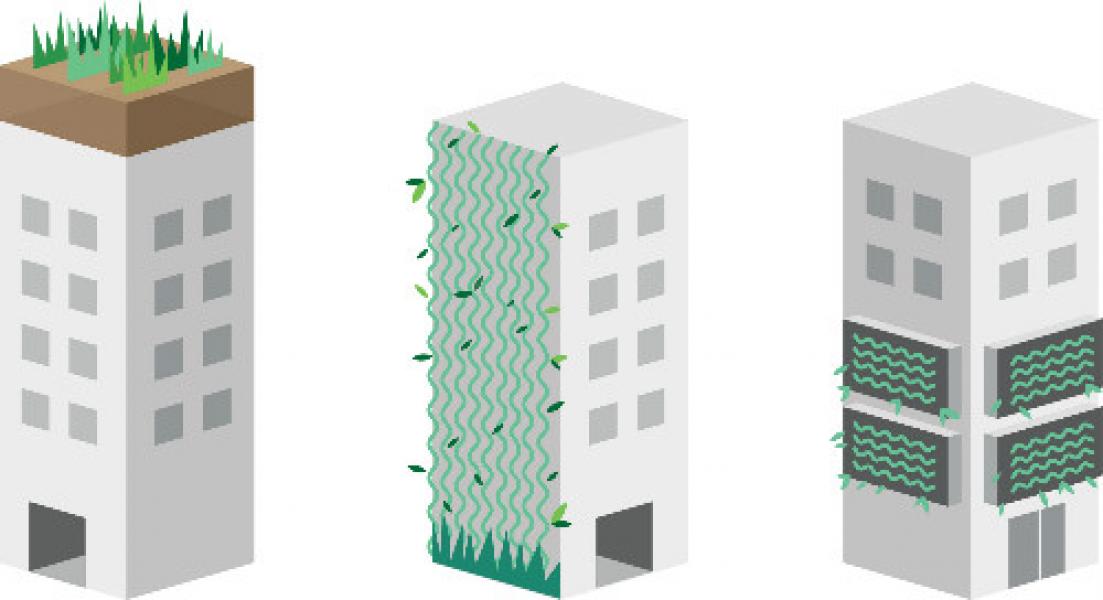Greening Melbourne’s Roofs and Walls: Six Steps Forward

In 1988, the City of Melbourne had about 40,000 inhabitants and 20 per cent green cover. In 2009, this was measured again and it was determined that the city’s population had increased to 100,000 people with green coverage reduced to a mere 13.6 per cent, according to Gail Hall, a primary author on The Growing Green Guide.
This dramatic loss of green space is still having severe implications for Australia’s most liveable city.
Hall notes that most of the lost green space was originally situated on private property. She adds that it’s critical that we look at ways to vegetate Melbourne’s built environment to combat the heat island effect - it can be six degrees hotter in Melbourne than it can be in the surrounding suburbs. Hall attributes this temperature issue not only to the loss of greenery, but also to a growing population of people, heat generation from cars, buildings and the sun absorbing into concrete.
“Other problems with density have seen this reduction in green cover and also removing biophilia– a human need for nature,” she said. “The logical progression is looking at horizontal and vertical surfaces – roofs and walls.”
The opportunities for green infrastructure are extensively detailed in The Growing Green Guide, Australia’s first guide to green roofs and walls.
Chair of the City of Melbourne’s environmental portfolio, Councillor Arron Wood, said the guide was produced to assist the private sector (planners, designers, developers and homeowners) in adding to the city’s green infrastructure and to encourage innovation in urban greening.

The guide mentions some of the key pressure points the city is experiencing where green roofs and walls could assist:
- Energy use: air conditioners in offices, industry and homes increase greenhouse gas emissions, while greenery cools buildings naturally
- Water quality: urban runoff collects pollution; green roofs and walls trap and use this runoff
- Green space: urban sprawl has threatened food production and reduces green space for recreation and biodiversity
- Air quality: dust and vehicular pollution are trapped air in urban canyons but can be "cleaned" using green roofs and walls
- Temperature: hotter cities can lead to heat-related illness and death, plus poor liveability. Once again, greenery has cooling qualities
- Flooding: extreme rainfall and fewer permeable spaces clogs drains and leads to localised flooding, which can also be mitigated through greenery
Despite the benefits of green roofs, a stigma remains that they are too hard to implement. Concerns include perceptions of high installation costs, maintenance and doubts over their effectiveness.
A series of Melbourne experts have offered their thoughts on exactly how the city can be greened in a viable and effective way. This discussion of green infrastructure will be aligned with activity in the City of Melbourne, including its CBD and surrounding suburbs such as South Melbourne, West Melbourne and others.
Read full article @ Sourceable




